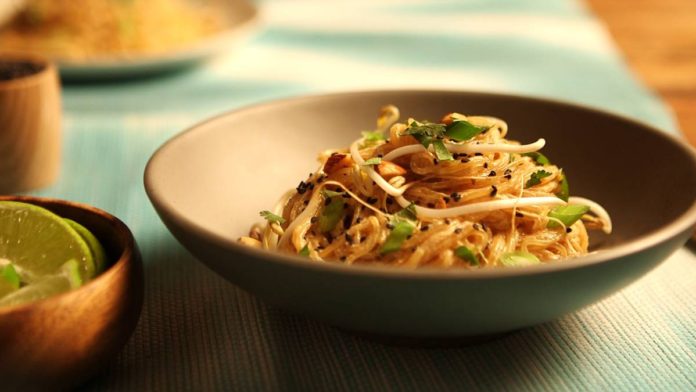You've likely tried #PadThai, wherever you may be from. The #Thai dish, with shrimp, eggs, vegetables, and peanuts, has become ubiquitous around the world.
The late Plaek Phibunsongkhram—Thailand's third prime minister—would no doubt be pleased with this development.
Best known as "Phibun," the prime minister was also a fan of pad Thai. In fact, it was his idea to push the dish nationally last century.
In 1932, Phibun was among military leaders who staged a coup to challenge absolute rule by royalty.
At the time, Thailand was called Siam, and led by a king (today, it's a constitutional monarchy with a newly crowned king, Maha Vajiralongkorn).
In 1938, Phibun became Siam's third prime minister and soon began issuing "cultural mandates."
The state decrees included changing the country's name to Thailand, commissioning music and lyrics for a new national anthem, and unifying the ethnically diverse nation.

Phibun believed a shared identity could be created using cultural tools. Food was among those tools, and he pushed a new national noodle dish on the people of the newly named nation.
But the dish he chose wasn't widely eaten before the decree, and it didn't even originate in Thailand.
"He simply had this particular version of a Thai noodle that was made by his housekeeper in his kitchen and he really liked it," retired nutritional anthropologist Penny Van Esterik, who specializes in Southeast Asian cuisines and worked in Thailand, tells the South China Morning Post.
"So that dish somehow became standardized… It became a 'Thai noodle dish', and [Phibun] was promoting the idea that one should eat it, particularly civil servants, for lunch."
The Thai noodle dish for civil servants was actually a riff on a Chinese import from the 1700s, according to Van Esterik.
It was introduced to the Siamese kingdom by Chinese traders and, centuries later, modified by Phibun, whose government issued a standard recipe to food vendors nationwide.
Ironically, at the same time the Thai Public Welfare Department was popularizing the national dish with Chinese origins, it also banned Chinese food imports to ensure that its Thai noodles would be widely consumed.
National unity may not have been the sole motivator for promoting pad Thai.
A bowl of rice noodles uses less grain than does a serving of plain rice, and after the second world war Thailand experienced a rice shortage.
Popularizing the noodles was also a way to make precious grain supplies last longer.
Whatever the real reasons for the food propaganda, Phibun's campaign worked, probably beyond his wildest dreams.
Now pad Thai is eaten far and wide, beyond his nation's borders, and for many foreigners who will never visit, this delicious noodle dish symbolizes Thailand.




Inga kommentarer:
Skicka en kommentar